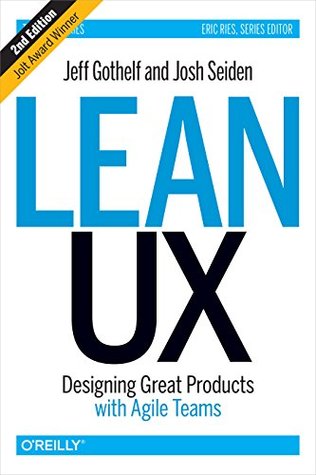More on this book
Community
Kindle Notes & Highlights
Lean UX is three things. It begins as a process change for designers and product teams. But it’s much more than that. It’s a culture change that lets us approach our work with humility; we acknowledge that our initial solutions will probably be wrong and use many sources of insight to continuously improve our thinking. It’s also a way of organizing and managing software design and development teams to be more inclusive, collaborative, and transparent.
Brown continued, “[it’s] a discipline that uses the designer’s sensibility and methods to match people’s needs with what is technologically feasible and what a viable business strategy can convert into customer value and market opportunity.”
Created by Dave McClure, an early employee of PayPal and the founder of 500 Startups, this framework is based on a customer lifecycle funnel (Figure 3-6).
Design Studio is a popular way to do this.1 This method, born in the architecture world where it was called Design Charrette, is a way to bring a cross-functional team together to visualize potential solutions to a design problem.
In digital product design, behavior trumps opinion.
Landing page test
Feature fake (aka the button to nowhere)
Wizard of Oz
In general, knowing you’re never more than a few days away from customer feedback has a powerful effect on teams. It takes the pressure off of your decision making because you know that you’re never more than a few days from getting meaningful data from the market.
One of the ways that team prioritized the work they did was by regularly checking the pulse of the customer base. The team did this with a standing monthly meeting with customer service representatives. Each month Customer Service would provide the UX team with the top 10 things customers were complaining about.
Popularized by product management guru Marty Cagan, dual-track Agile is an attempt to build a continuous product discovery and delivery model for Scrum teams.
In the Agile community, you sometimes hear people talk about Big Design Up Front, or BDUF. We’ve been advocating moving away from BDUF for years. But it wasn’t always that way.
Agile-fall is the combination of an up-front design phase that results in work that is handed off, waterfall style, to an engineering team to then break up into stories and develop in an “agile” way.
ustwo have found this fixed-price engagement (in many ways a variation of the Design Sprint technique) to be a far more effective way to share how they work with new clients than the traditional Keynote pitch deck.
Inspired by David Bland’s Team Working Agreement, the Project Working Agreement lays out, in very clear terms, exactly how the different agencies will work together.1 The agreement covers things like the following:


